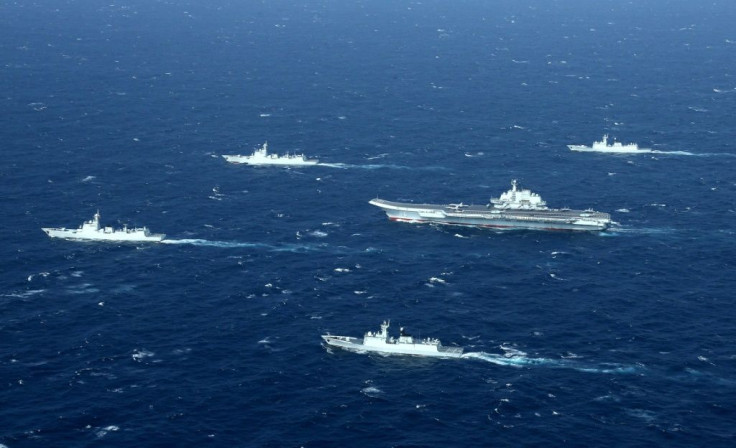South China Sea Dispute: Beijing's Navy Drills Were Message To US, Analysts Say
KEY POINTS
- Experts say China is sending a strong message to the U.S. and other countries by conducting multiple military exercises in the South China Sea
- China is flexing its military muscle to show it is capable of engaging in multiple conflicts throughout the region
- The U.S. has expressed its opposition to China's recent aggressive actions
A quartet of coordinated military exercises held in three different Asian seas is aimed at sending a message to the U.S., according to some analysts. The message is that China is ready for any confrontation with the U.S. or Taiwan.
The South China Morning Post (SCMP) reported that between last Friday and Sunday, notices were sent out by marine safety administrations to two locations in the South China Sea, and one each to locations in the East China Sea and the Yellow Sea. A fifth notice was sent to the Bohai Gulf in that Yellow Sea, presumably for the same exercise.
Experts keeping tabs on the situation include Collin Koh, a research fellow from the S Rajaratnam School of International Studies in Singapore, and Song Zhongping, a military commentator in Hong Kong.
Koh said that Beijing was sending two messages: a political one that "first relates to demonstrating resolve in keeping up with peacetime combat preparations in the eyes of both domestic public and external audiences," and a second operational message.
"Operationally, it’s to showcase the PLA’s (People’s Liberation Army) ability to carry out major mobilization of forces for training across multiple sea areas, which also highlights that the PLA isn’t affected in any way by the pandemic," Koh said.
He added, "The move would be primarily directed at the recent spate of the U.S. and allied military activities in those areas."
Song Zhongping said, "We can aim for peace strategically, but we must have military means to back up this goal." Song also pointed out that coordinating the drills indicates readiness by the PLA to face multiple battles at the same time.
Neither expert thought that this was a prelude to any planned military action against the U.S., which has made clear its opposition to China's recent aggressive actions in the region.
What is unusual is for the PLA to carry out large-scale drills at multiple locations so soon after other major exercises had concluded in previous weeks.
In July, with two U.S. aircraft carriers conducting tactical air defense exercises in the South China Sea, China conducted three separate military exercises. These drills were not conducted simultaneously.
In August, at about the same time that U.S. Health Secretary Alex Azar was in Taiwan, China held what were described as major exercises "to safeguard national sovereignty." Azar was the highest-ranking U.S. official to visit Taiwan since Washington switched its diplomatic recognition from Taipei to Beijing in 1979.
The flexing of military muscle by China and the U.S. will likely continue. China has used bullying techniques against those with competing interests in the South China Sea and has openly said it would use force if needed to reunify with Taiwan under Communist rule.
Beijing has also enacted new security laws on Hong Kong causing U.S. officials to announce sanctions on Chinese officials for "implementing Beijing’s policies of suppression of freedom and democratic processes" in Hong Kong.
The result has pushed Taiwan and Hong Kong closer to the U.S. and that is increasing the tensions between Beijing and Washington.
China has also altered its approach to other Southeast Asian nations, calling to resolve the maritime disputes through dialogue and requesting that those countries not side with the U.S.

© Copyright IBTimes 2024. All rights reserved.





















